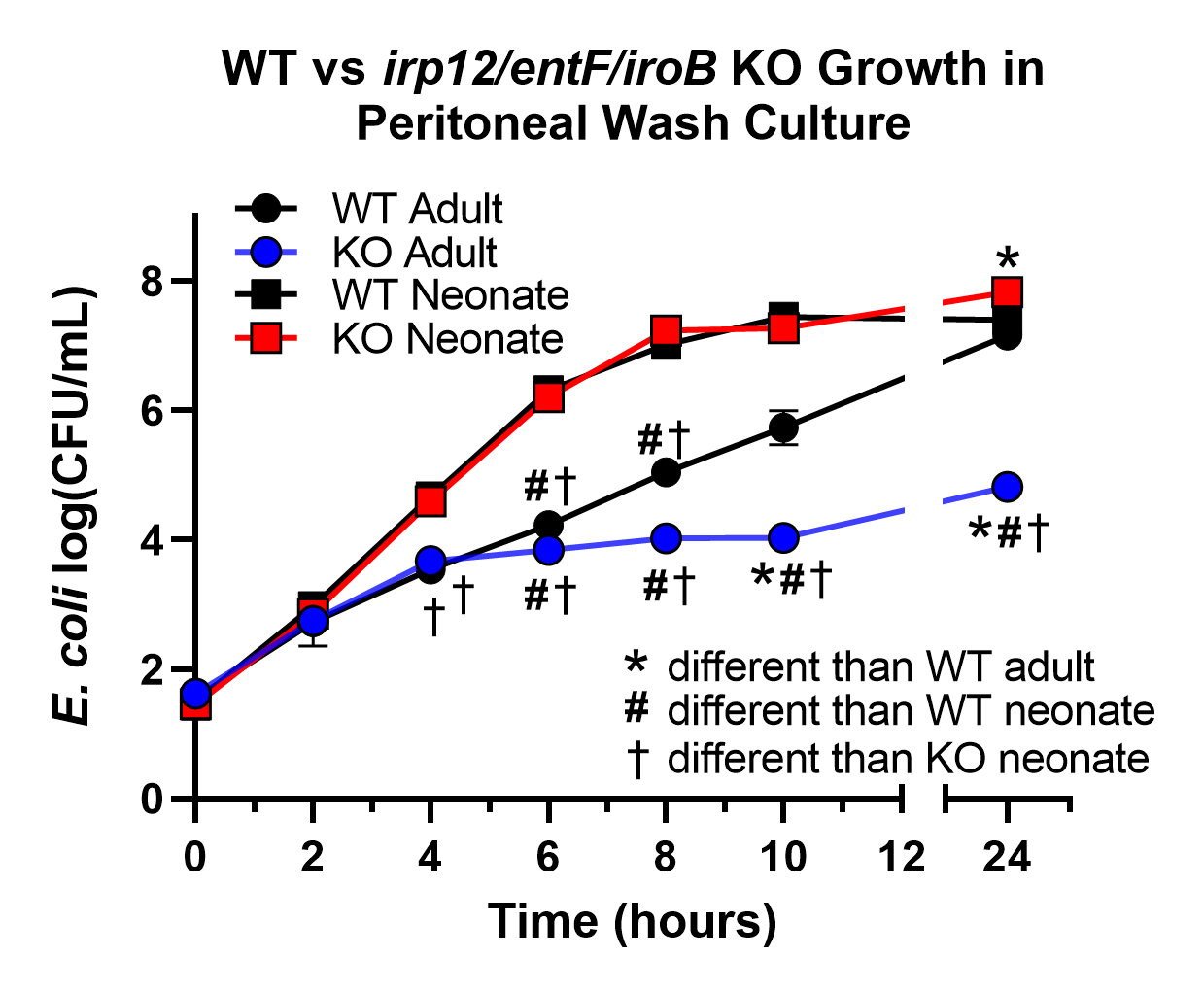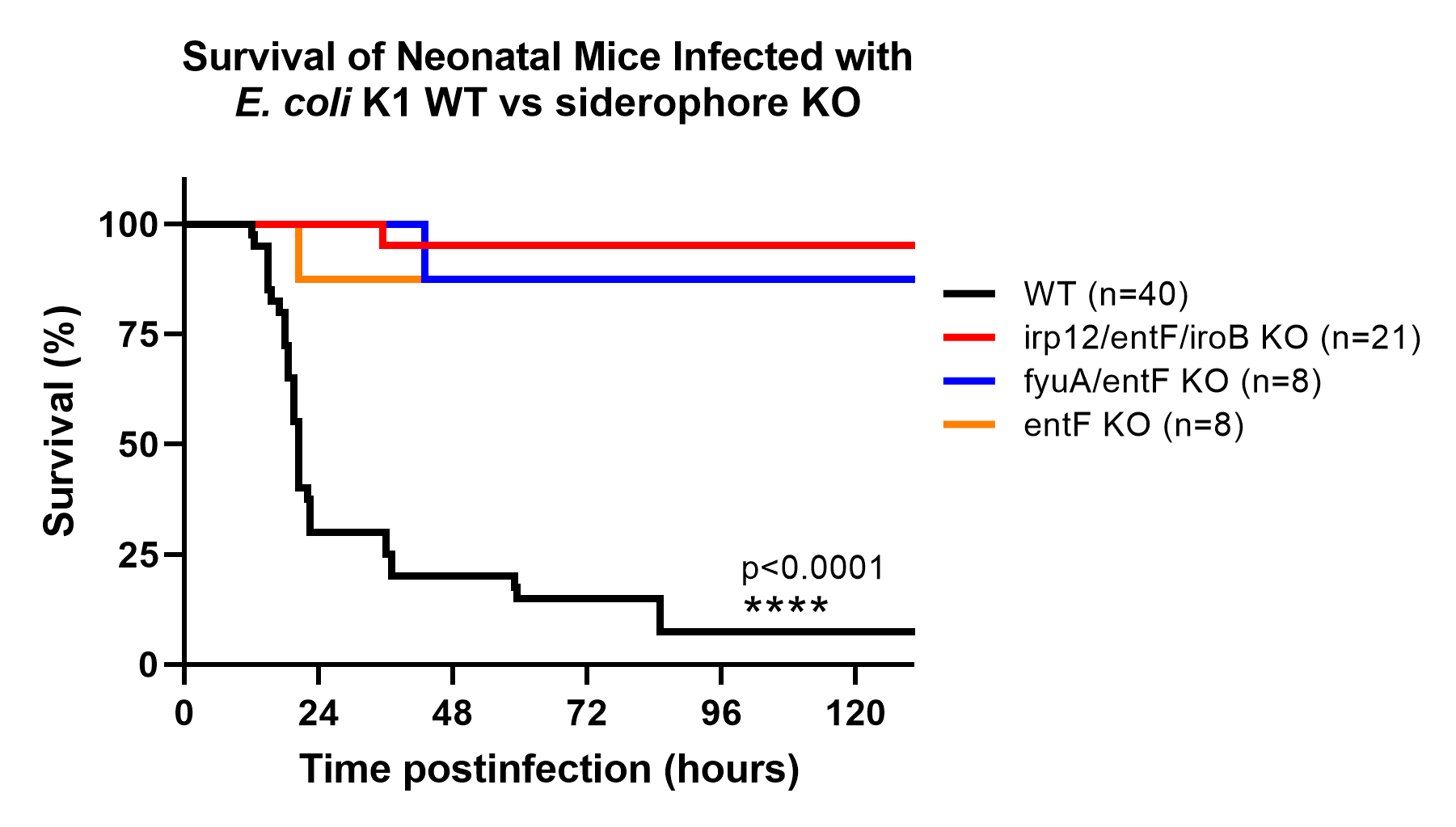Neonatology
Session: Neonatal Infectious Diseases/Immunology 1
597 - Siderophores Are Required for E. coli K1 Associated Mortality in a Mouse Model of Neonatal Sepsis
Friday, May 3, 2024
5:15 PM - 7:15 PM ET
Poster Number: 597
Publication Number: 597.234
Publication Number: 597.234

Jeremy A. Sandgren, MD, PhD (he/him/his)
Neonatal-Perinatal Medicine Fellow
University of Iowa
Iowa City, Iowa, United States
Presenting Author(s)
Background: Neonates are particularly susceptible to infection. E. coli containing the K1 antigen (E. coli K1) does not cause disease in healthy adults but is the most common cause of early onset sepsis-related death in neonates. We previously found that intraperitoneal (IP) injection of E. coli K1 in mice similarly has minimal to no effect in adults but causes sepsis and death in neonates. Additionally, we found that this stark difference in outcomes is related to higher levels of available iron within the neonatal peritoneal cavity compared to adults.
Objective: By knocking out important iron acquisition compounds called siderophores and/or their receptors in E. coli K1, we hypothesize we will decrease its growth in peritoneal wash fluid (PWF) and its virulence in an in vivo neonatal sepsis model.
Design/Methods: Combined siderophore or siderophore receptor E. coli K1 knockouts (KOs) were obtained and included KO of Enterobactin (entF), Yersiniabactin (irp12), Salmochelin (iroB), Yersiniabactin receptor (fyuA), and Enterobacter-Salmochelin receptor (iroN). Specific knockouts included fyuA/entF, fyuA/iroB, fyuA/iroN, irp12/iroN, and irp12/entF/iroB. Wild-type (WT) E. coli K1 and KO E. coli K1 were grown in murine adult (8-12 weeks) or neonatal (P3-5) PWF from C57Bl/6 mice and colony forming units (CFUs) were measured at 0, 2, 4, 6, 8, 10, and 24 hours. For the in vivo model, 1000 CFU of WT or KO E. coli K1 were injected IP into P3-5 neonatal C57Bl/6 mice to induce sepsis and time-to-mortality was calculated.
Results: As previously demonstrated, WT E. coli K1 grew more slowly in adult PWF compared to neonatal PWF at earlier time points, but growth was similar at 24 hours. KO growth was not different from controls in neonatal PWF. However, irp12/entF/iroB KO growth was slower and did not reach control CFU at 24 hours in adult PWF (8hr 5.04 vs 4.03, p=0.07; 10hr 5.74 vs 4.03, p=0.03; 24hr 7.16 vs 4.82, p< 0.01; Figure 1). Additionally, IP injection of irp12/entF/iroB KO (KO1), fyuA/entF KO (KO2), or entF KO (KO3) E. coli K1 into neonatal mice caused decreased mortality compared to WT E. coli K1 (mortality at 120 hrs: WT 86% (n=21) vs KO1 10% (n=21) vs KO2 13% (n=8) vs KO3 13% (n=8); p< 0.01; Figure 2).
Conclusion(s): Siderophores are required for robust bacterial growth in low-iron environments and for sepsis-associated mortality in neonatal mice. These data suggest that siderophores, particularly entF, and/or their receptors are promising vaccine candidates to improve outcomes related to E. coli K1 infection in neonates.


